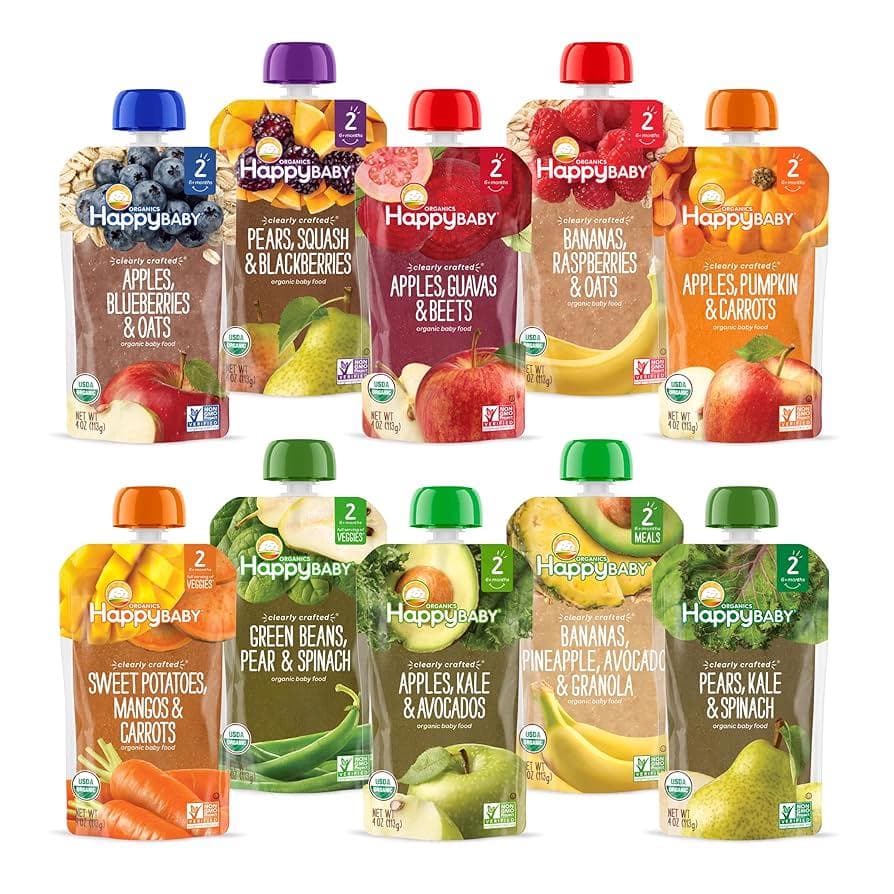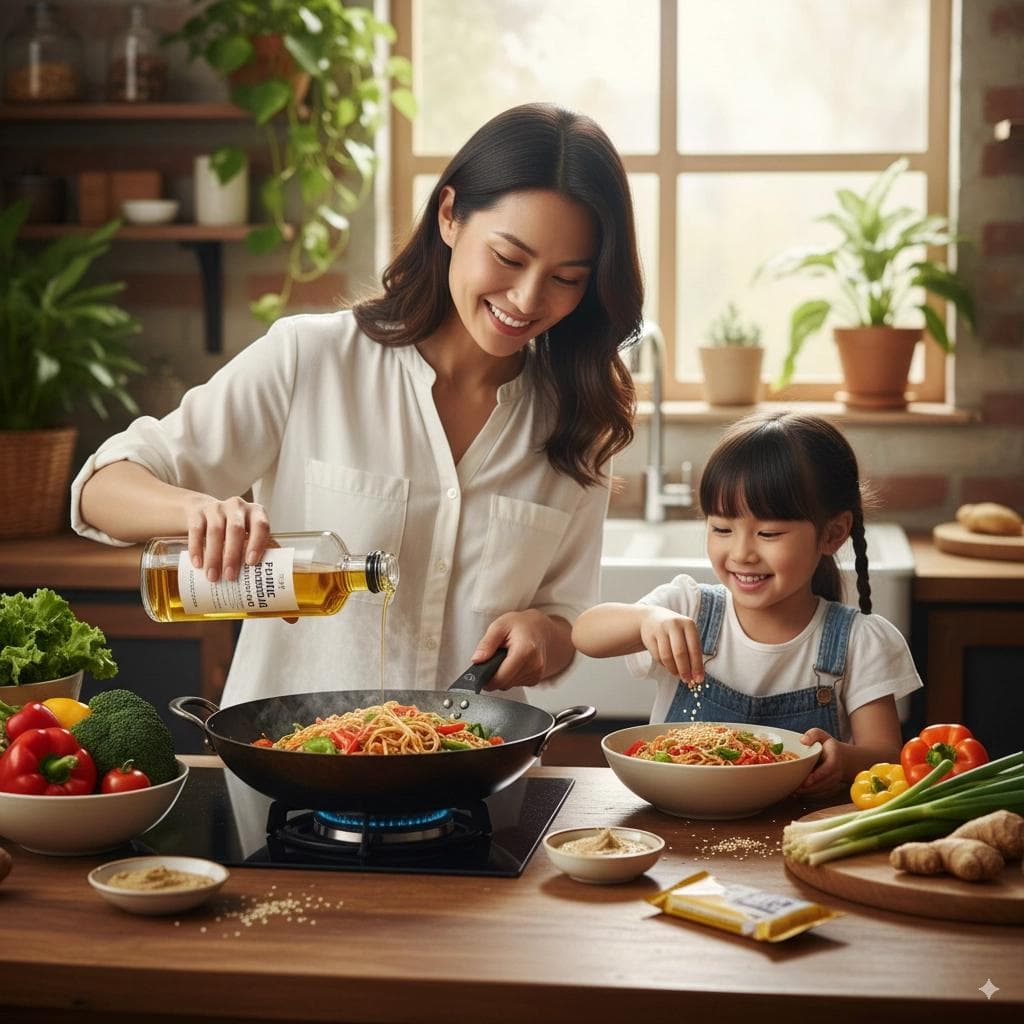



At Olive, we believe every parent deserves clear, honest answers about what’s in their child’s food.
That’s why we commissioned independent lab testing—through an ISO-accredited laboratory partner—to bring you the facts about popular snacks like Annie’s Organic Chewy Granola Bar Chocolate Chip.
In this report, we break down the latest lab results for Annie’s Organic Chewy Granola Bar Chocolate Chip, explain what they mean for your family, and offer guidance on how to make safer food choices. Our mission is simple: empower you with the knowledge you need to protect your loved ones.
Annie’s is a well-known brand among parents seeking organic, kid-friendly snacks. Their Organic Chewy Granola Bar Chocolate Chip is a go-to for many families looking for a convenient, sweet treat that feels wholesome.
Processed cereal snacks like these bars are often marketed as healthy options, but even organic products can contain trace amounts of heavy metals from soil, water, and processing. That’s why Olive paid for this round of testing—to give you the facts, not just the marketing.
Our ISO-accredited lab partner, Light Labs, tested Annie’s Organic Chewy Granola Bar Chocolate Chip for four key heavy metals: arsenic, cadmium, lead, and mercury. Here’s how the product measured up against the strictest international and U.S. safety standards:
| Contaminant | Level | Limit Test |
|---|---|---|
| Arsenic | 31.18 ppb | ❌ Exceeds Limit |
| Cadmium | 36.91 ppb | ✅ Pass |
| Lead | 6.66 ppb | ✅ Pass |
| Mercury | 0.77 ppb | ✅ Pass |
The result for arsenic in Annie’s Organic Chewy Granola Bar Chocolate Chip is 31.18 parts per billion (ppb). The maximum allowed by EU Regulation 2023/915 is 20 ppb. This means the product exceeds the established safety limit for arsenic, a toxic element linked to developmental and neurological harm in children.
Cadmium was detected at 36.91 ppb, which is below the 40 ppb safety threshold. While this is within limits, cadmium exposure should still be minimized, as it can accumulate in the body over time.
Lead was found at 6.66 ppb, well below the 10 ppb maximum set by both the EU and the FDA’s “Closer to Zero” initiative. For California Proposition 65, this equates to 33.30% of the daily limit per serving. That means it would take over 3 servings (100 / 33.30 = 3.00; so, over 3 servings) in a single day to exceed the Prop 65 daily lead exposure limit.
Mercury was detected at a very low level (0.77 ppb), far below the Clean Label Project’s 100 ppb cap.
The most significant finding from this round of testing is the elevated arsenic level in Annie’s Organic Chewy Granola Bar Chocolate Chip. Chronic exposure to arsenic—even at low levels—has been associated with developmental delays, lower IQ, and increased risk of certain cancers, especially in infants and young children. While a single serving is unlikely to cause harm, repeated or frequent consumption of foods exceeding safety standards can add up over time.
The lead level, while within legal limits, still contributes to daily exposure. No amount of lead is considered completely safe, particularly for children whose brains and bodies are still developing. The cadmium and mercury levels are within acceptable ranges, but as with all heavy metals, minimizing exposure is best.
Heavy metals like arsenic, lead, cadmium, and mercury are naturally occurring in the environment, but industrial pollution and agricultural practices can increase their presence in food. International and U.S. safety standards exist to protect the most vulnerable—infants, toddlers, and pregnant women—from the cumulative effects of these toxins.
- EU Regulation 2023/915 and U.S. FDA “Closer to Zero” set strict limits for heavy metals in foods commonly consumed by children.
- California Proposition 65 requires warnings on products that could expose consumers to more than the state’s daily limit for lead, a rule designed to protect reproductive and developmental health.
- Clean Label Project’s First 1,000 Days Promise focuses on the critical window of early childhood, when even low-level exposure can have lifelong consequences.
By testing products like Annie’s Organic Chewy Granola Bar Chocolate Chip, Olive gives you the transparency you need to make informed decisions.
Parents deserve to know the facts about what’s in their pantry. Olive’s independent lab testing is part of our commitment to food safety transparency. We don’t just rely on manufacturer claims—we commission ISO-accredited labs to provide unbiased, third-party data. Our goal is to empower you to ask the right questions and choose safer options for your family.
If you’re concerned about heavy metals found in Annie’s Organic Chewy Granola Bar Chocolate Chip, you’re not alone. Toxic baby food reports have highlighted the need for greater oversight and consumer awareness. Olive is here to help you navigate these concerns with real data, not just headlines.
- Arsenic: Exceeds safety limit (31.18 ppb vs. 20 ppb maximum)
- Cadmium, Lead, Mercury: Within limits, but lead is 33.30% of the CA Prop 65 daily limit per serving
- CA Prop 65 Calculation: It would take over 3 servings in a single day to exceed the daily lead limit
While Annie’s Organic Chewy Granola Bar Chocolate Chip passes for lead, cadmium, and mercury, the arsenic result is a concern. Parents should be mindful of how often their children consume this product and consider rotating with other snacks that have lower heavy metal content.
---
Is Annie’s baby food safe?
Annie’s Organic Chewy Granola Bar Chocolate Chip meets safety standards for lead, cadmium, and mercury, but exceeds the limit for arsenic. Occasional consumption is unlikely to cause harm, but frequent servings may increase exposure to arsenic, which can be harmful over time.
Does Annie’s baby food have heavy metals?
Yes, lab results show the presence of arsenic, cadmium, lead, and mercury in Annie’s Organic Chewy Granola Bar Chocolate Chip. Most levels are within established safety limits, except for arsenic, which exceeds the recommended maximum.
Food safety shouldn’t be a guessing game. With the Olive app, you can instantly access independent lab testing data for thousands of products—simply by scanning a barcode. It’s the fastest, easiest way for busy families to get the facts and make safer choices, right at the grocery shelf or in your own kitchen.
Download the Olive app today and join our movement for food transparency. Because you have the right to know what’s in your food—and Olive is here to help you find out, every time you shop.
Instant Barcode Scane
Allergen Detection
Clear Ingredient Insights
Get Personalized Suggestions

Discover everything you need to know about Happy Baby Pouches: A Parent's Guide to ensuring safe and nutritious choices amidst heavy metals concerns.
Sep 25, 2025
Is sesame oil a seed oil? Yes — but not all seed oils are harmful. Learn why sesame oil is different from the “Hateful Eight” and discover the best sesame oil substitutes like oliv...
Sep 25, 2025Always.
We never monetize through brand deals, affiliate links, or ads — so you can trust our recommendations are always aligned with our users.
Effortless food scanning
Peace of mind for parents
Healthy product recommendations